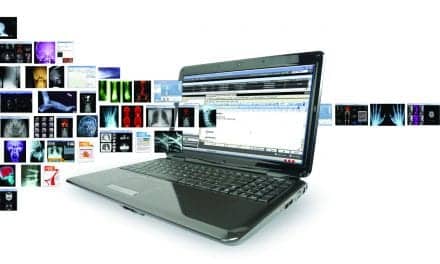By Kurt Woock
Dose management is a hot topic, and health care providers are taking a variety of approaches to address it. Two hospitals, one in Utah and one in South Carolina, have each begun using technology to lower overall radiation dose for their patients. More than simply bringing the technology through their doors, these two facilities spearheaded coordinated efforts that included staff and vendors. Through these efforts, radiation doses have effectively been cut in half.
Keeping Kids Protected
Intermountain Primary Children’s Medical Center, Salt Lake City, is a 200-bed hospital serving children from five Western states. Children who need imaging exams are at particular risk: “We know they will be a repeat customer at some point in their life,” said Casey Dye, diagnostic coordinator at Primary Children’s Medical Center. “At such a young age, their cells are developing rapidly. We want to make sure that we continually keep that dose down.” Dye said Primary Children’s routinely sees infants and children on life support in critical care units who need multiple imaging exams. “In the long run, we are potentially saving them from the long-term effects of radiation.”
In 2011, the hospital installed a DRX-Revolution with a DRX1-C cesium iodide detector, and in 2012 added Carestream’s Pediatric Capture Image Optimization & Enhancement Software. “We started noticing that we could drop our doses down, so we went down a little bit more,” Dye said. “We found that with our CR system, and our DR portable, we were cutting our dose in half.”

The software allows users to identify possible dose reductions in two ways. Before the imaging procedure, the system asks for the patient’s age and weight. The software places the patient in one of seven pediatric categories and adjusts the dose accordingly. The software also analyzes completed images in order to help inform users in similar situations in the future. “That’s one of the neat functions,” Dye said. “We can do a chest x-ray in the morning, and when I go in that afternoon, I can see what techniques were used.” By seeing what worked and what didn’t, users can learn from each procedure and build better protocols. Primary Children’s also is implementing new processes to shield patients from any unnecessary radiation. For example, they are starting to place shields over the neck to protect patients’ thyroid glands during abdominal x-rays.
The hospital looked at a variety of portable imaging systems before they decided on Carestream’s technology. In addition to reducing dose, the system can be deployed more readily thanks to a few unique features. “My team really likes the built-in RFID reader. Our techs don’t have to sign in because it interfaces with the RFID chip in our staff badges,” Dye said. Before, a crew might save time by leaving the same user logged in each time. Now, users automatically log in with a tap of their badge. “Now, I know who has accessed the system to image patients and when, and we know where the portable is.”
A variety of stakeholders approve of the system. “Our nurses were really impressed and were requesting the DRX-Revolution,” Dye said. “When we talk about it with patients’ families, they all have very positive responses.” Dye said the hospital has a goal of converting completely to DR and extending the same dose-reducing benefits to everyone in the hospital.
The Value of Benchmarking, Training
The radiology department at McLeod Regional Medical Center, Florence, SC, has been addressing radiation dose for a few years. “We started with ACR’s dose index registry,” said David Poston, Director of Radiology/Imaging at McLeod. “We’ve been working on low-dose protocols as well.” But after last year’s RSNA, McLeod began working with the Toshiba PROTECT program to enhance the dose-reduction steps the hospital was already taking. While they had programs in place, some of the payoffs wouldn’t occur until later. “We didn’t feel like there was a standard process in place,” Poston said. “We felt like we needed a benchmark to go by. The ACR dose index registry was going to give us that sometime in the future, but we weren’t there yet.”
 David Poston with the hospital’s Toshiba Aquilion ONE.
David Poston with the hospital’s Toshiba Aquilion ONE.
Poston and his team considered other programs before selecting PROTECT. The program spans 3 years. First, Toshiba personnel came to McLeod, pulled baseline doses, and examined existing CT protocols. Working with staff from McLeod, Toshiba will analyze this data and update protocols to work toward helping McLeod reach their dose reduction goals without sacrificing image quality. Over the 3 years, the new protocols will be gauged and modified as needed. In addition to the protocols, the radiology staff at McLeod will receive training and education from Toshiba.
Technology plays a role in the dose reduction efforts, as well. McLeod recently acquired a Toshiba Aquilion ONE, its ninth Toshiba scanner. Poston says that radiation has been cut 50% on cardiac scans, and that over time, McLeod can reduce dose even more.
Patients probably aren’t interested in learning about hospital protocols, but Poston says the PROTECT program is different. Not only will patients learn about it, but McLeod also will market the benefits of having such a program in place. “Once we are further along in the program, we’ll hold an open house, distribute press releases throughout the community, and put out posters in the waiting rooms.” He says that patients do ask about radiation dose, even now, and that demonstrating a commitment to lowering dose can go a long way. “Patients want to go to a facility where they know people are looking out for their safety.”
Poston says the dose-monitoring program has informed long-term business thinking. “It has brought attention to other devices,” he said. “We will be looking to similar programs in the future, like in diagnostic x-ray. If we’re talking about systems I might acquire in the future, I’d look for something with a radiation dose monitoring feature.”





